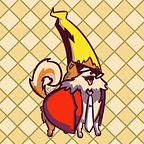Tiananmen Square Massacre Reading List
A list of recommended resources on the 1989 Tiananmen protest movement and massacre, based on this Twitter thread of mine.
[#1] An article by Zhang Yueran on the oft forgotten workers’ movement for socialist democracy during the 1989 Tiananmen protests. (If you only have time for one article, read this one!)
[#2] A report by Robin Munro detailing what really happened before and during the Tiananmen Square Massacre that cuts through misconceptions on both sides:
[#3] A section on the Tiananmen movement from Red Dust, a journal on the economic history of the PRC by the independent Chinese communist collective Chuang (闖):
[#4] An essay by Promise Li on how the Tiananmen Square Massacre “has been weaponized for hawkish Western foreign policy and how Tiananmen workers struggle shows a radical internationalist alternative to navigating the US-China rivalry,” now with a new preface:
[#5] Promise Li also posted this very informative Twitter thread on the nuances of the 1989 Tiananmen movement, debunking the sophistry of the PSL:
(Check the alt text of the pictures in this thread for his sources.)
[#6] For the perspective of an older generation on the Tiananmen Square Massacre, refer to this essay by Chinese astrophysicist Fang Lizhi (written a year after the Massacre).
[#7] For the perspective of a younger generation, I highly recommend
Cheng Yangyang‘s poignant essay on how she discovered the Tiananmen Square Massacre (which also talks about the aforementioned Fang Lizhi).
[#8] I also recommend this compilation of how five young people from China discovered the Tiananmen Square Massacre — all told in their own words:
[#9] 六四記憶‧人權博物館, a bilingual online museum from #HongKong that commemorates the 1989 Tiananmen protests and massacre:
(Some of the interface is in Chinese only, but the content is available in English; just click on the “EN” circle. If you have trouble navigating the site due to the language barrier, just message me and I’ll help you out.)
[#10] With a provocative title, Mia Wong’s essay situates the Tiananmen workers’ movement in the wider context of workers’ struggles for socialist democracy around the world against their capitalist, fascist, and capital-C Communist oppressors.
[#11] Through the story of a popular anime, I talk about my relationship with the Tiananmen Square Massacre as a Chinese born after 1989. (No prior knowledge of Attack on Titan is required, though you’ll get more out of this essay if you do.)
[#12] I also recommend Louisa Lim’s The People’s Republic of Amnesia: Tiananmen Revisited, which covers another massacre of protestors in Chengdu that occurred around the same time as the one in Beijing.
[Bonus #1] The Tiananmen Square Massacre was also arguably a case of colonial state violence in the “periphery” boomeranging back to the metropole.
A report by the International Campaign for Tibet on the Chinese Party-state’s repression of the March 1989 Tibetan uprising in Lhasa: https://savetibet.org/a-struggle-of-blood-and-fire/
For those short on time, a brief Twitter thread on the same topic:
[Bonus #2] An article on the much lesser known but equally important 1976 Tiananmen protests:
[Bonus #3] A more recent book titled June Fourth: The Tiananmen Protests And Beijing Massacre Of 1989.
“The Tiananmen protests and Beijing massacre of 1989 were a major turning point in recent Chinese history. In this new analysis of 1989, Jeremy Brown tells the vivid stories of participants and victims, exploring the nationwide scope of the democracy movement and the brutal crackdown that crushed it. At each critical juncture in the spring of 1989, demonstrators and decision makers agonized over difficult choices and saw how events could have unfolded differently. The alternative paths that participants imagined confirm that bloodshed was neither inevitable nor necessary. Utilizing a wide range of previously untapped sources and examining how ordinary citizens throughout China experienced the crackdown after the massacre, this ambitious social history sheds fresh light on events that continue to reverberate in China to this day.”
Book review below:
(will update if I come across more relevant resources)
